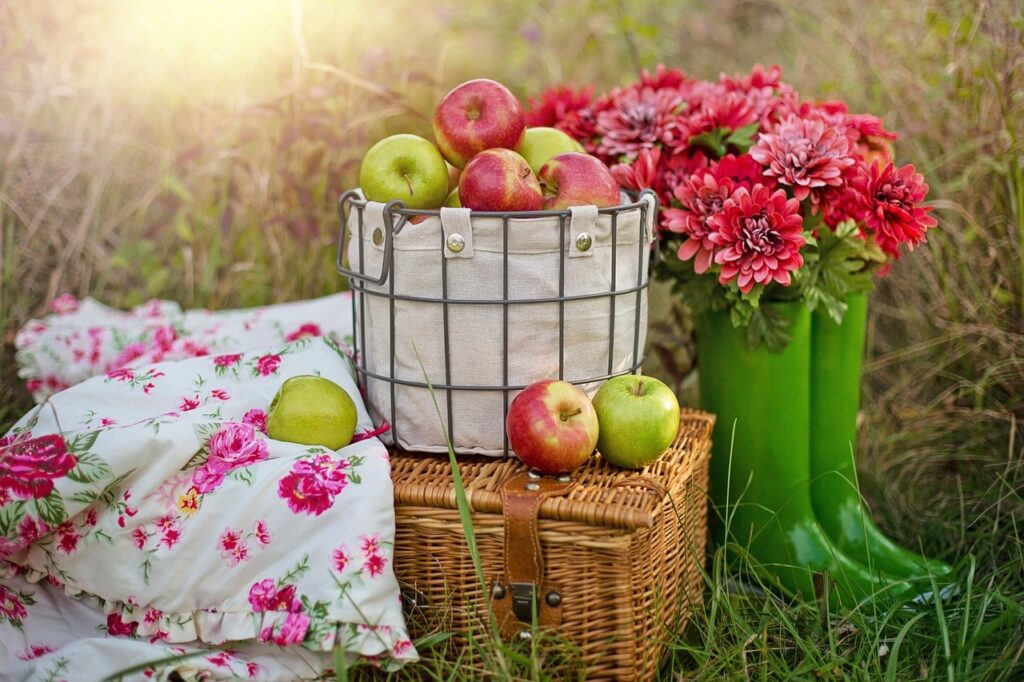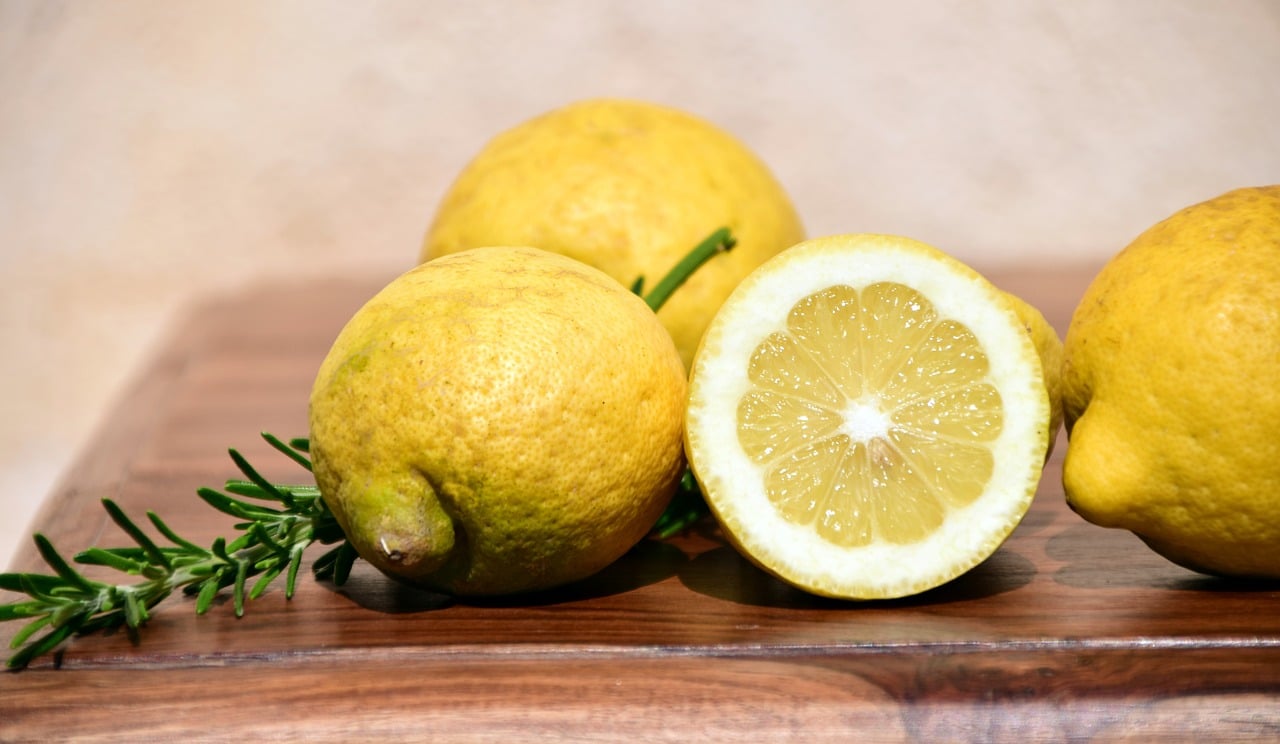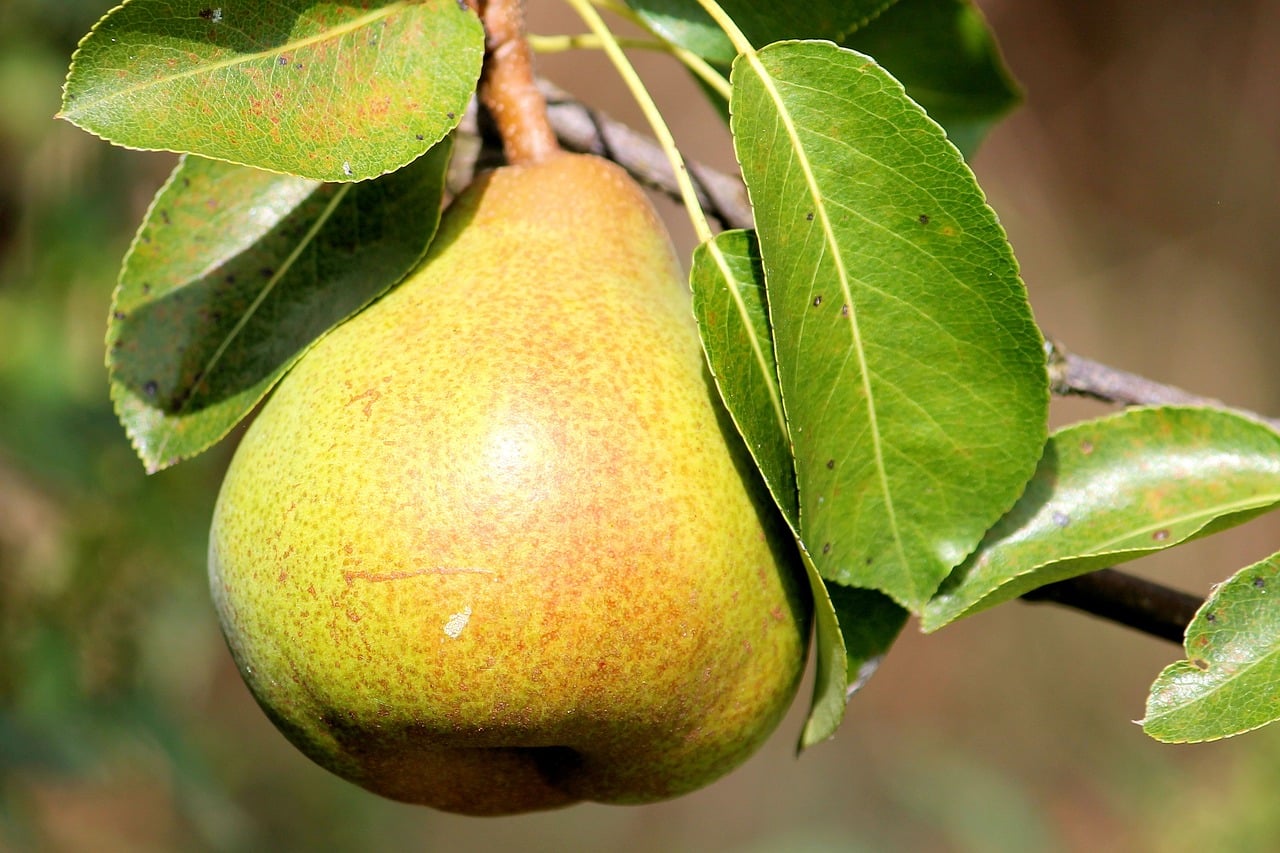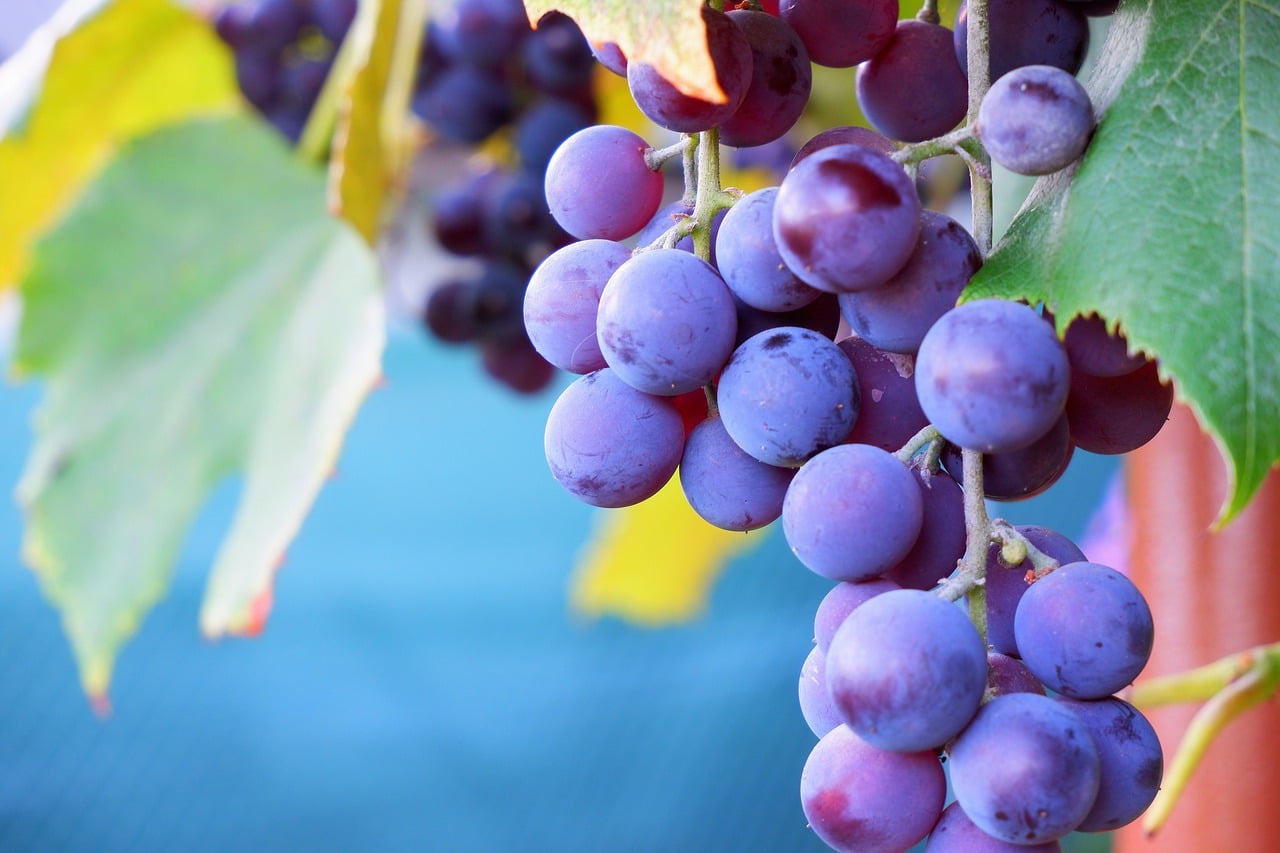
Fruit in Italian: 85+ Words, Expressions and More
When you think of Italy, you might think of grapes, figs and citrus fruit.
But did you know that Italy also produces many prickly pears and kiwis?
Or that calling someone a fig means they’re cool but calling them a pear means they’re clumsy or naive?
This blog post will provide you with all the juicy details on how to say fruits in Italian, along with slang terms, common expressions and even Italian recipes with fruit.
Let’s take a bite of the delicious world of Italian fruit!
You might also want to check out this post on Italian vegetables once you’re done.
Contents
- How to Say “Fruit” in Italian
- Common Italian Fruit Vocabulary
- Common Italian Fruit Expressions
- Italian Fruit Slang
- Important Italian Fruit
- Italian Recipes with Fruit
- And One More Thing...
Download: This blog post is available as a convenient and portable PDF that you can take anywhere. Click here to get a copy. (Download)
How to Say “Fruit” in Italian
Before we can delve into the different kinds of fruit in Italian, let’s take a moment to learn the word for “fruit”:
Frutta — Fruit
Frutta is a feminine noun that’s always used in the singular form, even when referring to multiple types of fruit. That means you’d say ho comprato della frutta to mean “I bought some fruit” even if you purchased apples, oranges and bananas.
When using frutta to refer to a specific type of fruit, you can use it in combination with the definite article la or il, depending on the gender of the fruit. For example, la frutta fresca means “fresh fruit” and il frutto della passione means “passion fruit.” You’ll have to learn which genders go with which fruit, but the word itself is invariable. That’s one less thing to worry about!
You can get a better sense of this by checking out some examples of the word in use:
La frutta è un alimento sano e nutriente. — Fruit is a healthy and nutritious food.
Oggi ho comprato della frutta fresca al mercato. — Today I bought some fresh fruit at the market.
Mia nonna mi ha regalato una cesta di frutta per il compleanno. — My grandma gave me a basket of fruit for my birthday.
Dal nostro fruttivendolo ci sono molte varietà di frutta esotica. — In our fruit store there are many varieties of exotic fruit.
I bambini hanno mangiato tutta la frutta che ho comprato ieri! — The kids ate all the fruit I bought yesterday!
Prepariamo una crostata di frutta per il pranzo di domani. — Let’s make a fruit tart for tomorrow’s lunch.
Mia madre mangia sempre della frutta dopo cena. — My mother always eats some fruit after dinner.
Common Italian Fruit Vocabulary
Let’s learn some Italian fruit terms! Starting with these common fruits that don’t quite fall into the categories below, a mix of core and pomaceous fruit (a term I just learned while writing this article. The more you know!).
Pero — Pear
Mela — Apple
Nespola — Loquat
Il Cotogno — Quince
Caco — Persimmon (aka cachi, kaki, or diospero in Tuscany)
Stone fruit in Italian
Stone fruit have a pit, or “stone” in their center and a soft, juicy exterior. They’re some of my favorites!
Frutta a nocciolo — Stone fruit
Dattero — Date
Pesca — Peach
Albicocca — Apricot
Prugna — Plum
Ciliegia — Cherry
Amarena — Sour cherry
Mango — Mango
Avocado — Avocado (yes, technically a fruit!)
Melons in Italian
Melons are the perfect summer fruit. Here are a few common types of melon in Italian:
Melone — Melon
Cocomero — Watermelon
Cantalupo — Cantaloupe
Melone bianco — Honeydew
Berries in Italian
Wild and farmed warm-climate berries are abundant in Italy. Some colder-region berries like cranberries and lingonberries aren’t found as commonly but still occasionally make their way to Italian meals and desserts.
Frutti di bosco — Berries
Banana — Banana (yep, bananas are berries!)
Lampone — Raspberry
Fragola — Strawberry
Mirtillo — Blueberry
Mora / bacche di more — Blackberry
Ribes — Currant
Uva spina — Gooseberry
Sambuco — Elderberry
Mirtilli rossi — Cranberry
Mirtilli di palude — Lingonberries
Bacca di Goji — Goji berry
Melagrana — Pomegranate
Citrus Fruit in Italian
Italy’s climate is perfect for growing citrus fruit, particularly in the southern regions and Sicily. The juicy and tangy nature of the citrus fruit makes it a popular fruit to incorporate into various dishes—or eat fresh, my personal preferred way to consume them.
Agrumi — Citrus fruit
Arancia — Orange
Limone — Lemon
Lime — Lime
Mandarino — Mandarin
Pompelmo — Grapefruit
Clementina — Clementine
Tangerino / mandarino tangerino — Tangerine
Bergamotto — Bergamot (This is the fruit that gives Earl Gray tea its distinct flavor and is widely grown in Calabria.)
Cedro — Citron
Tropical fruit in Italian
Rising temperatures and varying micro-climates across the country’s different regions make it possible to grow certain tropical fruit in Italy. If you’ve been paying attention throughout this article, you won’t be surprised to learn that it’s the southern regions that are best suited for tropical fruit. So while mangoes and pineapples might make you think of the Caribbean, don’t be surprised if you bump into them in Italy, too!
Frutta tropicale — Tropical fruit
Ananas — Pineapple
Mango — Mango
Papaya — Papaya
Cocco — Coconut
Guava — Guava
Maracuja / frutto della passione — Passion fruit
Litchi — Lychee
Frutto del drago — Dragon fruit
Carambola — Starfruit
Jackfruit — Jackfruit
A useful way to practice this vocabulary is by using flashcards. You could also try searching for some of these fruit words using FluentU’s contextual video dictionary to see how they are used in native media.
FluentU takes authentic videos—like music videos, movie trailers, news and inspiring talks—and turns them into personalized language learning lessons.
You can try FluentU for free for 2 weeks. Check out the website or download the iOS app or Android app.
P.S. Click here to take advantage of our current sale! (Expires at the end of this month.)
Common Italian Fruit Expressions
Knowing all these different fruit names is a good start, but how do you actually talk about fruit? You’ll want to learn these common expressions and phrases that are used to discuss fruit in Italian. Use these to turn your newly acquired fruit vocabulary into everything from salad to jam.
La frutta di stagione — Seasonal fruit
Una macedonia di frutta — A fruit salad
Frutta secca — Dried fruit
Frutta candita — Candied fruit
Frutta fresca — Fresh fruit
Frutta biologica — Organic fruit
Frutta a kilometro zero — Locally grown fruit (lit. “fruit at zero kilometers”)
Fare la marmellata — To make jam
Frutta matura — Ripe fruit
Frutta acerba — Unripe fruit
Spremere un’arancia — To squeeze an orange
Una ciotola di frutta — A bowl of fruit
Frutta a guscio — Nuts (lit. “fruit with a shell”)
Il fruttivendolo — The fruit and vegetable seller (a common type of shop in Italy)
Italian Fruit Slang
If you hear someone mention a pear in conversation, that might not be talking about the actual fruit. If you’re clumsy like me, you might hear it a lot—that’s because pera is used to describe someone clumsy or naive!
Here are some common Italian fruit slang expressions to add some extra flavor into your conversations:
Mele marce — Bad apples (used to describe people who are corrupt or dishonest)
Pera — Idiomatically used to refer to someone who is naive or clumsy (lit. “pear”)
Fico — Idiomatically used to refer to something that is cool or awesome (lit. “fig”)
Essere una mela marcia — To be a bad apple (used to describe a person who is corrupt or dishonest)
Scivolare su una buccia di banana — To be on thin ice (lit. “Sipping on a banana peel”)
Fare la pera cotta — Used to indicate a person a bit naive or clumsy (lit. “to make the cooked pear”)
Spremere come un limone — To squeeze like a lemon (used to describe a situation where someone is taking advantage of another person)
Essere una ciliegina sulla torta — To be the cherry on top (lit. “to be the cherry on the cake”)
Essere una macedonia — To be a mix of different things (lit. “to be a fruit salad”)
Essere una fichissima — To be super cool (lit. “to be a really cool fig”)
Important Italian Fruit
Corbezzolo — Strawberry tree
I guarantee that, unless you’re from Italy, you’ve never heard of the strawberry tree. And yet, it’s considered the national symbol of Italy thanks to its fall bloom colors: red berries, white flowers and green leaves.
But what even is a strawberry tree? The tree actually has no relation to strawberries—it gets that name because the tree’s fruits happen to look a bit like strawberries. (Though if you ask me, they resemble lychee more!)
The fruit of the strawberry tree, also called corbezzolo in Italian, has a distinctive taste that can be difficult to describe. It smells like anise and tastes like a mix between a pear and a kiwi, with a slightly grainy texture and a sweet and tangy flavor.
The corbezzolo fruit is used in many traditional Italian dishes, jams and liqueurs. The flowers of the tree are also put to use in the production of corbezzolo honey, a type of bitter honey with hints of licorice and coffee. Throughout Italy’s history, the tree was associated with love, fertility and even magic, and the fruit was also used in traditional medicine as a remedy for various ailments.
But before you get into an eating binge with this fruit, you might want to note the fruit’s Latin name, Arbutus unedo, even means “Eat only one.” As the name implies, eating too many corbezzolo can cause an upset stomach!
Arance di Ribera — Ribera oranges
Although oranges aren’t native to Italy (they were introduced to Italy by Arab traders in medieval times), Italy is currently a major producer of the fruit, especially in the southern regions of the country.
One of the most beloved oranges in the country is the Ribera orange. This relatively new variety, developed in the mid-20th century, is grown in the town of Ribera in Sicily (as you may have guessed from its name!). The fruit’s bright orange color and delicious blend of sweet and acidic make the incredibly juicy oranges a popular choice for eating, juicing and incorporating into dishes.
Limoni siciliani — Sicilian lemon
Lemons are also not native to Italy, but the plants have adapted spectacularly to the country’s climate. In fact, they’ve been an important part of Italian culture since ancient Roman times! Back then, the fruits were used to treat a variety of ailments from digestive issues to scurvy (and rightly so, it turns out).
The lemons grown in the southern regions of Italy, particularly along the Amalfi Coast and in Sicily, are known for their unique flavor—they taste a bit like Meyer lemons, which you might be more familiar with if you live in America. These are the type of lemon used in the famous Italian limoncello liqueur (a personal favorite), as well as some types of lemon marmalade and various seafood dishes.
Lemons are even included in religious and cultural events in Italy: During the Feast of Santa Lucia in Sicily, for example, the fruits are used to decorate altars and are given as gifts to friends and family.
Chinotto — Myrtle-leaved orange tree
Chinotto is a citrus fruit known for its distinctly bitter taste. Its flavor is like an odd mix of orange and lime, with a hint of spice.
But Italians don’t eat the fruit—they drink it. The fruit is commonly used to make a type of soda also called “Chinotto,” which is similar to cola but has a more bitter taste. In Italy, the Chinotto soda is often associated with tradition and nostalgia!
Fico Bianco — White Figs
Fig trees are a great combination of looking great and tasting great. This means they’re used in both Italian kitchens and gardens, as decorative plants that double as dinner (or at least dessert). The Calabrian fig is even exchanged as a Christmas present in Italy.
Fig trees originate in Turkey, but the uniquely white fig is exclusively grown in Campania’s province of Salerno, in Cilento National Park.
The fig feels right at home on your charcuterie board among the prosciutto and ricotta. But figs also make delicious desserts—one Italian dish sees them stuffed with dried fruit and baked. Yum!
Fico d’India / Fichi di Barbaria — Prickly pear
Prickly pears made their way to Italy from Mexico and South America in the 15th century. While you might not associate the fruit with Italy, Sicily is actually one of the biggest producers of prickly pears after Mexico! The island’s unique soil composition grows exceptionally large fruit with a strong flavor. There’s even an annual prickly pear festival held in Roccapalumba, in the province of Palermo.
Uva — Grape
Of course, no mention of Italian fruit would be complete without grapes! Grapes have been cultivated in Italy for thousands of years for use fresh, dried or in wine making. The latter, especially, has a rich history in Italy, dating back to around the 8th century BC when the Etruscans brought grape vines to Tuscany. The ancient Etruscans were skilled in winemaking and developed techniques that are still used today. During the age of the Roman Empire, Italian wine production became widespread, and many of the famous Italian wine regions took shape.
Today, Italy is home to many renowned wine regions, including Tuscany, Piedmont and Veneto, and produces some of the world’s most popular wines. The grape and wine industry remains a significant part of Italian culture and economy, with many different types of grapes leading to many different types and flavors of wine.
Kiwi — Kiwi
Here’s a fruit you may not have expected to find on this list. The kiwi fruit, like many fruits important to Italian culture, isn’t actually native to Italy and was introduced from China fairly recently, in the 1970s. But this little foreign fruit has taken to the region so well, that Italy is now the world’s second largest producer of the fruit!
How did this happen? It’s all thanks to Ottavio Cacioppo, a researcher who was looking for a way to help revitalize the poorer southern regions of Italy. Until the 1930s, the Pontine Marshes in the Lazio Region were a dead zone infested with malaria-carrying mosquitoes. When Cacioppo introduced the kiwi plant to the region in 1971, he transformed it into what’s known today as “Little New Zealand.”
The combination of warmer temperatures due to nearby water and soil made extra fertile by the former marshes has given the region the perfect micro-climate to grow kiwis. The country has even established a consortium to promote and protect the quality and authenticity of Italian kiwi fruit, known as the Consorzio Italiano Kiwi.
Albicocca — Apricot
Apricots were brought to Italy by the ancient Romans, and continue to be cultivated in the country today, especially in the regions of Emilia-Romagna and Veneto. Apricot trees also thrive in the fertile soil around Mount Vesuvius, in Naples: The Vesuvian Apricot is a particularly sweet variety of Chrisomele apricot, a name that comes from the Greek for “golden apples.” In fact, crisommole is Neapolitan slang for apricot!
Pomodoro — Tomato
Finally, I need to mention the tomato, of course! This fruit/vegetable (apparently, it’s both!) is an integral part of Italian culture, featured widely in Italian cuisine from pizza and pasta sauces to salads and antipasti. If you’ve read the rest of this list, it’ll come as no surprise that the quintessentially Italian tomato… isn’t actually native to Italy.
The tomato was brought to Italy from South America in the 16th century, and it wasn’t widely adapted into Italian food making until the 19th century. That’s because, until then, the tomato was widely considered to be poisonous! Once a few daring individuals determined that tomatoes won’t kill you and are, in fact, delicious, the fruit (and vegetable) was gradually incorporated into meals.
Today, there are many different types of tomatoes, grown in different areas of Italy and used for different purposes, and the name of the fruit is nearly synonymous with Italian cuisine.
Italian Recipes with Fruit
Fruit also make their way into Italy’s cuisine. Here are some delectable treats for fruit and Italian language learners who want to make their fruitcake… and eat it, too.
- Panettone: A traditional Italian sweet bread loaf studded with candied fruit like raisins and orange and lemon peel. It’s typically enjoyed during the Christmas season. (Fun fact: They’re also a staple of the holiday spread with my husband’s Peruvian family, thanks to Italian immigrants.)
- Crostata di Frutta: This beautiful tart consists of a shortcrust pastry base filled with fresh fruit.
- Tiramisu: You probably know this one as an espresso and mascarpone cheese treat, but some variations of the Italian dessert include fresh fruit like berries or peaches.
- Crostini di Fichi: Remember that charcuterie board I mentioned in the “white fig” section? This simple but elegant appetizer is a riff on it, made with fresh figs, goat cheese and prosciutto. It’s a popular dish in Tuscany, where figs are abundant during the late summer and early fall.
- Panna Cotta con Frutti di Bosco: Panna cotta is a creamy, custard-like vanilla dessert. Berry panna cotta is—you guessed it!—a version of the dessert that’s served up with a mix of fresh berries.
- Sfogliatelle: This traditional seashell-shaped pastry from Naples has a flaky exterior filled with a creamy mixture of ricotta cheese and candied fruit.
- Insalata di Frutta: Nothing beats the classic fruit salad! Perfect for the summer, this treat is made with fresh, seasonal fruit. Although delicious on its own, fruit salad is sometimes topped with simple syrup, a sweet mix of water and sugar that can be flavored with lemon or orange zest.
- Pesche Ripiene: This classic Italian dessert is made with baked peaches that are filled with a mixture of amarette cookies, almonds and sugar. The peaches are baked until tender and served with a drizzle of honey or a dollop of whipped cream.
Do you have a hankering for a fresh fruit treat now? Grab a mela and head out there to sweeten up your conversations with delicious fruit words and expressions!
Download: This blog post is available as a convenient and portable PDF that you can take anywhere. Click here to get a copy. (Download)
And One More Thing...
If you're as busy as most of us, you don't always have time for lengthy language lessons. The solution? FluentU!
Learn Italian with funny commericals, documentary excerpts and web series, as you can see here:

FluentU helps you get comfortable with everyday Italian by combining all the benefits of complete immersion and native-level conversations with interactive subtitles. Tap on any word to instantly see an image, in-context definition, example sentences and other videos in which the word is used.

Access a complete interactive transcript of every video under the Dialogue tab, and review words and phrases with convenient audio clips under Vocab.

Once you've watched a video, you can use FluentU's quizzes to actively practice all the vocabulary in that video. Swipe left or right to see more examples of the word you’re on.

FluentU will even keep track of all the Italian words you’re learning, and give you extra practice with difficult words. Plus, it'll tell you exactly when it's time for review. Now that's a 100% personalized experience!
The best part? You can try FluentU for free with a trial.
Start using the FluentU website on your computer or tablet or, better yet, download the FluentU app from the iTunes or Google Play store. Click here to take advantage of our current sale! (Expires at the end of this month.)








